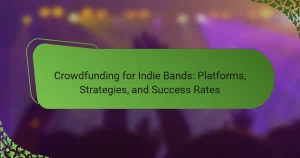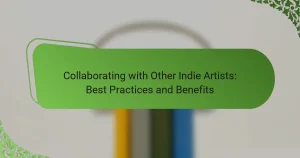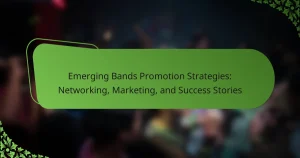Indie music collaboration platforms enhance creativity and connectivity among artists. They offer user-friendly interfaces, integrated production tools, and community forums for networking. Users benefit from exposure, feedback, and diverse collaboration opportunities. However, challenges like discoverability and monetization options can impact user experiences.
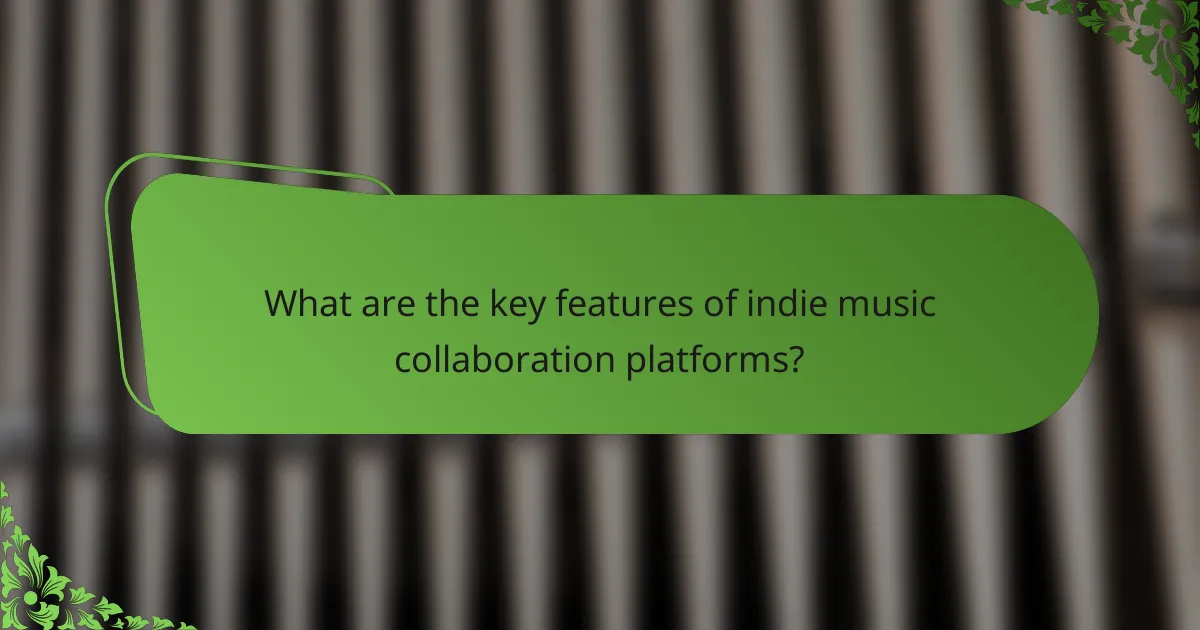
What are the key features of indie music collaboration platforms?
Indie music collaboration platforms offer features that enhance creativity and connectivity among artists. Key features include user-friendly interfaces, integrated tools for music production, community forums, and collaboration opportunities. These platforms often support various file formats, ensuring seamless sharing of music projects. Additionally, they may provide access to royalty-free samples and loops, fostering innovation. User experiences highlight the importance of networking and feedback, as artists can connect with like-minded individuals and receive constructive criticism.
How do these platforms facilitate remote collaboration among artists?
Indie music collaboration platforms facilitate remote collaboration among artists by providing tools for seamless communication and project management. These platforms often include features like file sharing, real-time editing, and integrated messaging systems. Artists can collaborate on tracks from different locations, enabling diverse input and creativity. Additionally, some platforms offer features for feedback and version control, enhancing the collaborative process and ensuring that all contributions are acknowledged.
Which tools are commonly integrated into these platforms for music production?
Common tools integrated into indie music collaboration platforms include digital audio workstations, virtual instruments, audio effects plugins, project management tools, and communication features. These tools enhance collaborative workflows and streamline music production.
What security measures do these platforms implement to protect user content?
Indie music collaboration platforms implement various security measures to protect user content. These include data encryption, secure access controls, and regular security audits. Platforms often utilize two-factor authentication to enhance user account security. Additionally, some platforms have content monitoring systems to detect unauthorized use. These measures ensure user content remains safe and confidential.
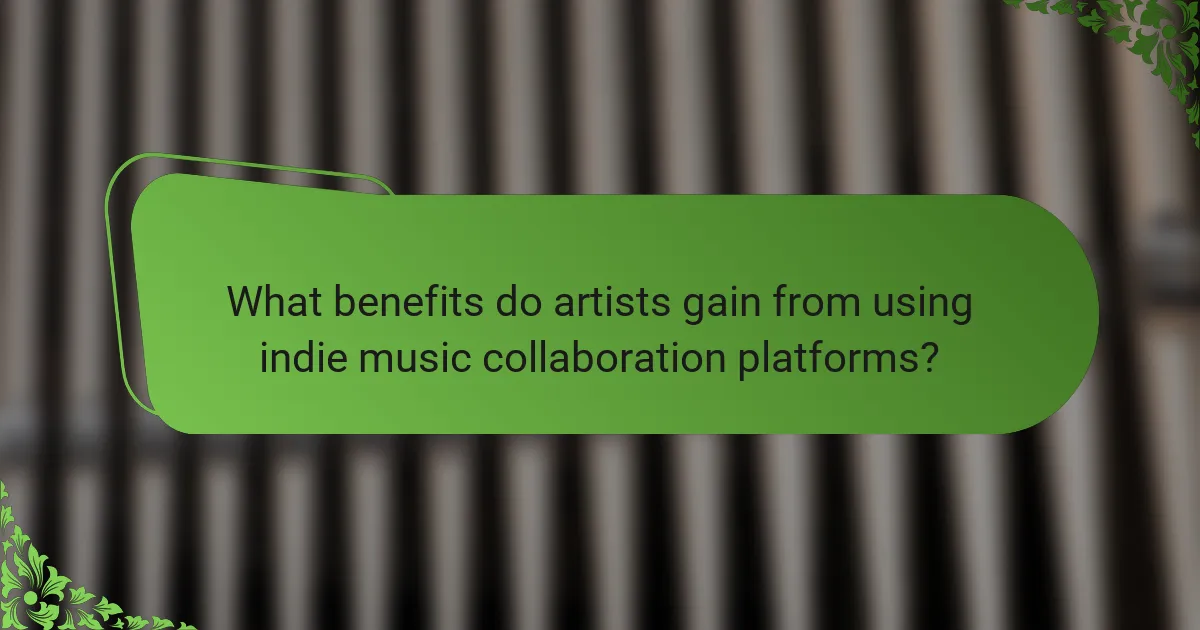
What benefits do artists gain from using indie music collaboration platforms?
Artists gain collaboration opportunities, exposure, and networking benefits from indie music collaboration platforms. These platforms facilitate connections with other musicians, producers, and industry professionals, enhancing creative processes. They often provide tools for sharing music, feedback, and resources, which can lead to improved skills and increased visibility. Many artists find that these platforms help them reach wider audiences and promote their work effectively.
How can these platforms enhance creativity and innovation in music-making?
Indie music collaboration platforms enhance creativity and innovation by providing diverse tools for artists. These platforms facilitate real-time collaboration, allowing musicians to share ideas instantly. Features like cloud storage and version control foster experimentation, enabling users to explore unique sounds and arrangements. Additionally, community feedback mechanisms encourage artistic growth, pushing creators to refine their work.
What opportunities for networking and exposure do they provide?
Indie music collaboration platforms provide extensive networking and exposure opportunities for artists. These platforms connect musicians, producers, and songwriters, facilitating collaborations that enhance visibility and reach. Users can share their work, receive feedback, and engage with industry professionals, which can lead to new projects and partnerships. Many platforms also host events and competitions, further increasing exposure to wider audiences.
How do collaboration platforms impact the distribution of music?
Collaboration platforms significantly enhance music distribution for indie artists by streamlining processes and expanding reach. These platforms offer features like cloud storage, real-time editing, and integrated marketing tools, allowing artists to collaborate efficiently regardless of location.
As a result, indie musicians can share their work with a broader audience through built-in distribution channels. Additionally, user experiences highlight the community aspect, fostering connections and networking opportunities that lead to increased visibility and potential collaborations.
The unique attribute of these platforms is their ability to democratize access to music distribution, enabling independent artists to compete with major labels. Rarely do traditional methods offer such flexibility and support for emerging talent.
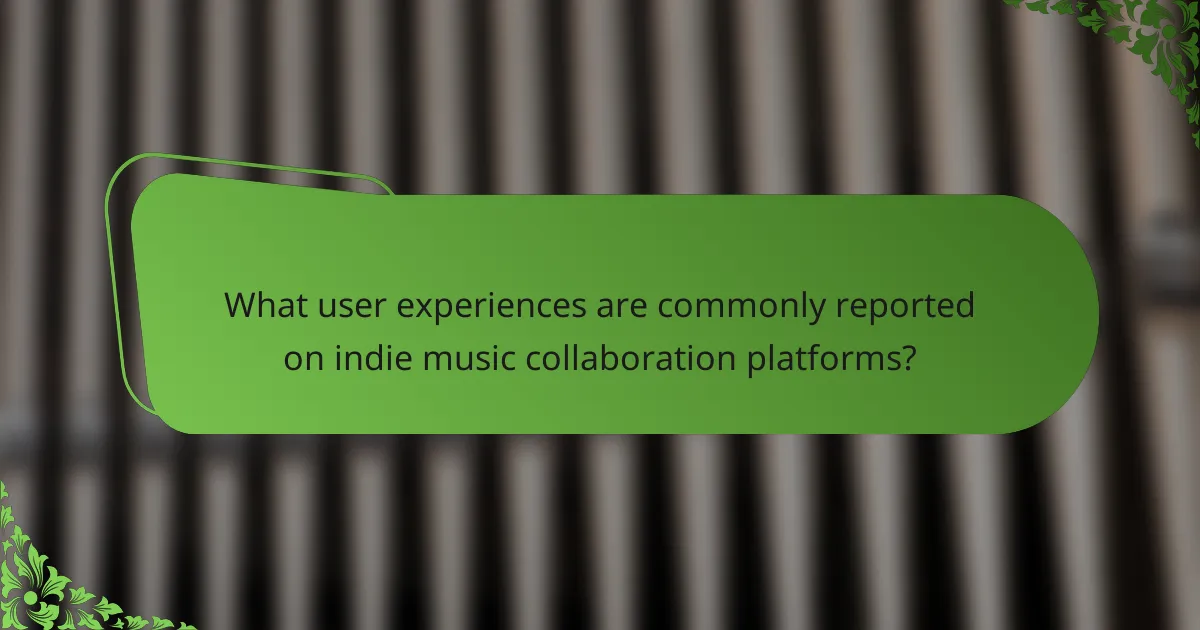
What user experiences are commonly reported on indie music collaboration platforms?
Users commonly report positive experiences on indie music collaboration platforms, highlighting features like accessible networking, diverse collaboration opportunities, and user-friendly interfaces. Many appreciate the ability to connect with like-minded artists and share creative ideas. Feedback often emphasizes the supportive community atmosphere, enabling artists to receive constructive criticism and encouragement. Some users note challenges with platform discoverability and finding compatible collaborators, but overall satisfaction remains high due to the unique attributes these platforms offer.
What challenges do users face when navigating these platforms?
Users face several challenges when navigating indie music collaboration platforms. These include difficulty in discovering relevant collaborators, navigating complex user interfaces, and managing communication effectively. Limited tools for project management can hinder workflow. Additionally, users may encounter issues with platform reliability and inconsistent user engagement.
How do user reviews vary across different regions or demographics?
User reviews on indie music collaboration platforms vary significantly by region and demographic. Factors such as cultural preferences, access to technology, and local music scenes influence these reviews. For example, users in urban areas may emphasize platform features that facilitate networking, while rural users may prioritize ease of use. Age demographics also play a role; younger users often seek innovative tools, whereas older users may focus on reliability and support. Regional trends can reveal unique attributes; for instance, platforms popular in Europe might highlight collaborative features more than those favored in North America.
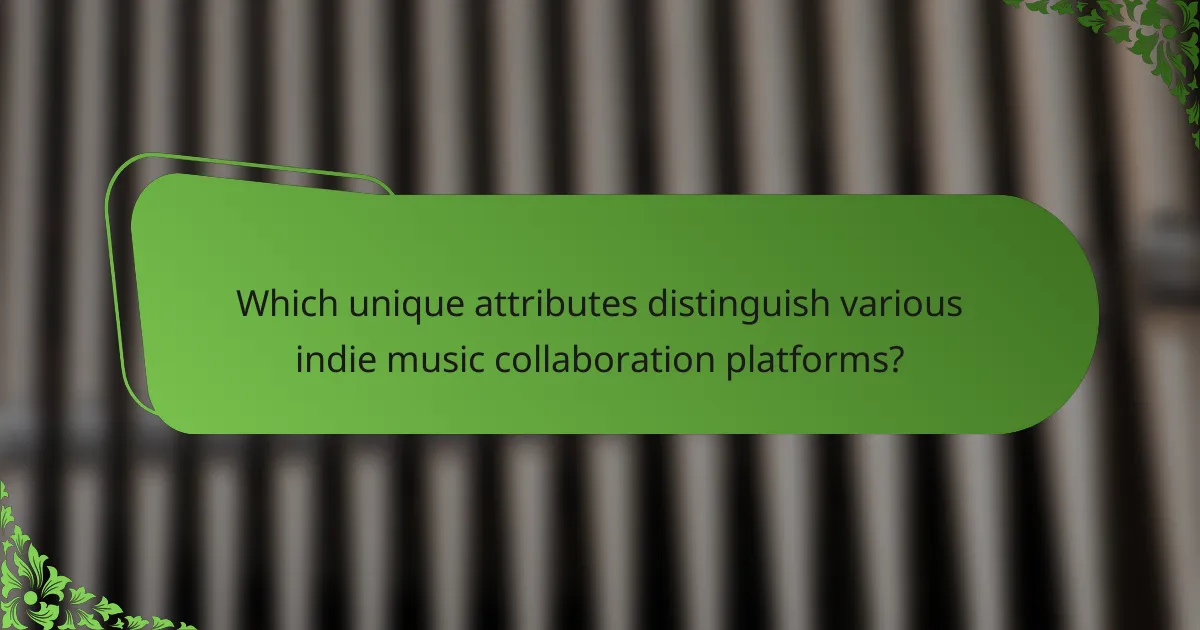
Which unique attributes distinguish various indie music collaboration platforms?
Unique attributes of indie music collaboration platforms include user interface design, community engagement features, integrated tools for music production, revenue sharing models, genre-specific resources, and licensing options. These attributes differentiate platforms and influence user experiences. For instance, some platforms prioritize ease of use, while others focus on niche genres or collaborative tools.
What niche markets do these platforms cater to within the indie music scene?
Indie music collaboration platforms cater to niche markets such as emerging artists, genre-specific communities, and DIY musicians. These platforms offer features like collaborative tools, genre-focused networking, and user-friendly interfaces tailored to independent creators. For instance, platforms may focus on specific genres like folk, electronic, or hip-hop, fostering unique communities that share similar musical interests. Additionally, they often provide resources for marketing, distribution, and funding, addressing the specific needs of indie musicians.
How do pricing models differ among platforms?
Pricing models among indie music collaboration platforms vary significantly, impacting user access and project costs. Some platforms charge a subscription fee, offering unlimited access to features, while others operate on a pay-per-use basis, where users pay for individual services or tools. Additionally, revenue-sharing models exist, where platforms take a percentage of earnings from projects facilitated through their services. Some platforms may also offer tiered pricing, providing different levels of service based on user needs. These differences affect how users engage with the platforms and the overall cost of collaboration.
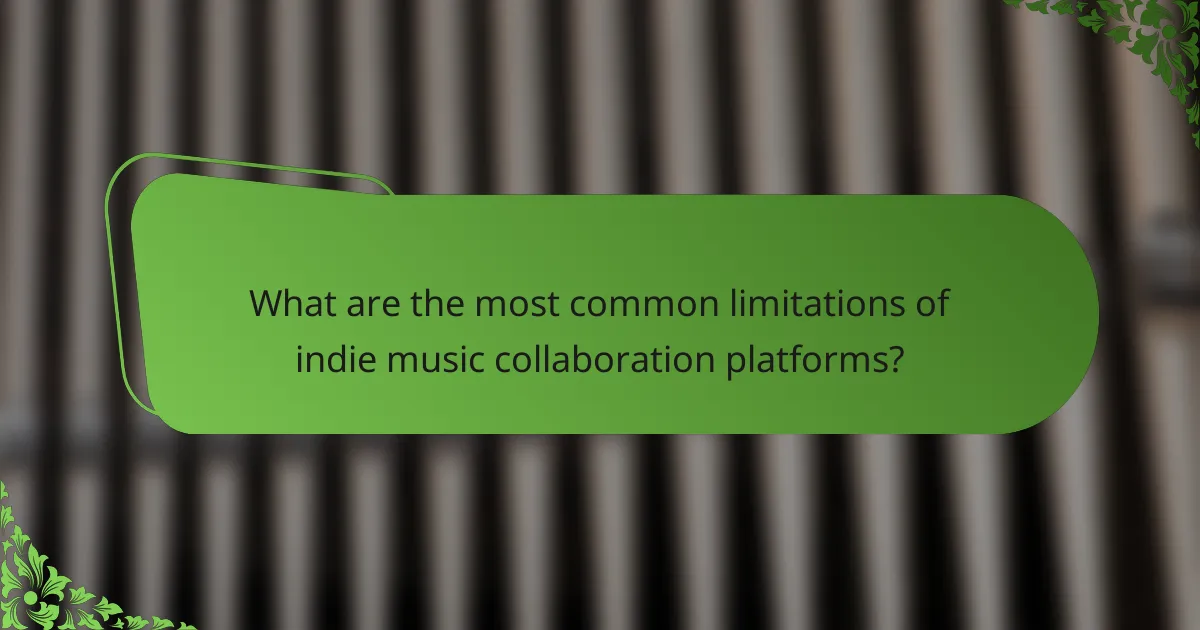
What are the most common limitations of indie music collaboration platforms?
Indie music collaboration platforms often face limitations such as lack of user engagement, limited features, and insufficient monetization options. These platforms may struggle with attracting a diverse user base, leading to fewer collaboration opportunities. Additionally, many platforms provide basic tools, which may not meet the advanced needs of professional musicians. Monetization options are frequently restricted, limiting artists’ ability to earn revenue from their work.
How do users perceive the quality of collaboration tools offered?
Users perceive the quality of collaboration tools based on functionality, ease of use, and integration capabilities. Features like real-time editing and communication enhance user experience. Positive feedback often highlights seamless collaboration and effective project management. Users value platforms that support diverse media formats and provide robust sharing options.
What are the technical barriers to entry for new users?
Technical barriers to entry for new users on indie music collaboration platforms include complex user interfaces, limited technical knowledge, and inadequate support resources. These factors can hinder effective participation and collaboration. Additionally, varying platform features may create confusion, making it challenging for newcomers to navigate and utilize tools efficiently.
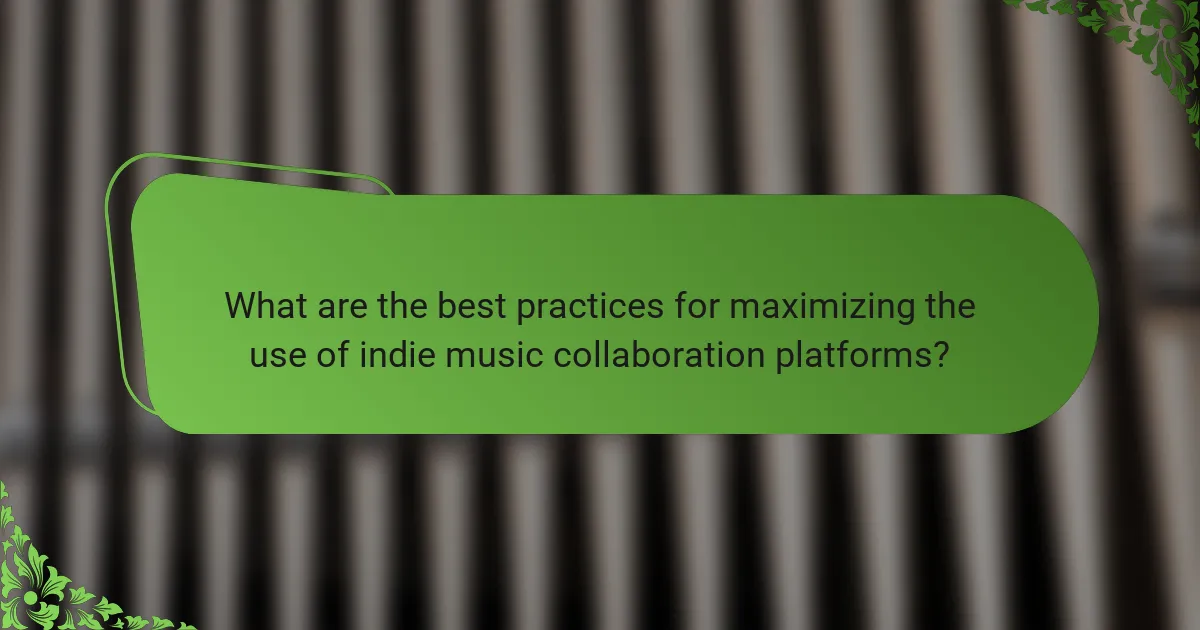
What are the best practices for maximizing the use of indie music collaboration platforms?
To maximize the use of indie music collaboration platforms, focus on clear communication, active engagement, and leveraging diverse features. Establish specific goals for collaboration to enhance productivity. Utilize platform tools like project management features, file sharing, and feedback systems to streamline workflows. Regularly participate in community discussions to build connections and gain insights. Lastly, explore various collaborative formats such as remote sessions or co-writing to diversify creative outputs.
How can artists effectively promote their collaborations on these platforms?
Artists can effectively promote their collaborations by leveraging social media, engaging with their audience, and utilizing platform features. Sharing teasers or behind-the-scenes content builds anticipation. Collaborating with influencers can expand reach. Regular updates and interactive content foster community engagement. Utilizing analytics tools helps track audience responses and optimize strategies.
What strategies can be employed to ensure productive collaborations?
To ensure productive collaborations on indie music platforms, prioritize clear communication and defined roles. Establish mutual goals to align efforts and encourage regular feedback to adapt to changing dynamics. Utilize tools for project management to track progress and maintain organization. Foster a supportive environment that values creativity and respect among collaborators.
